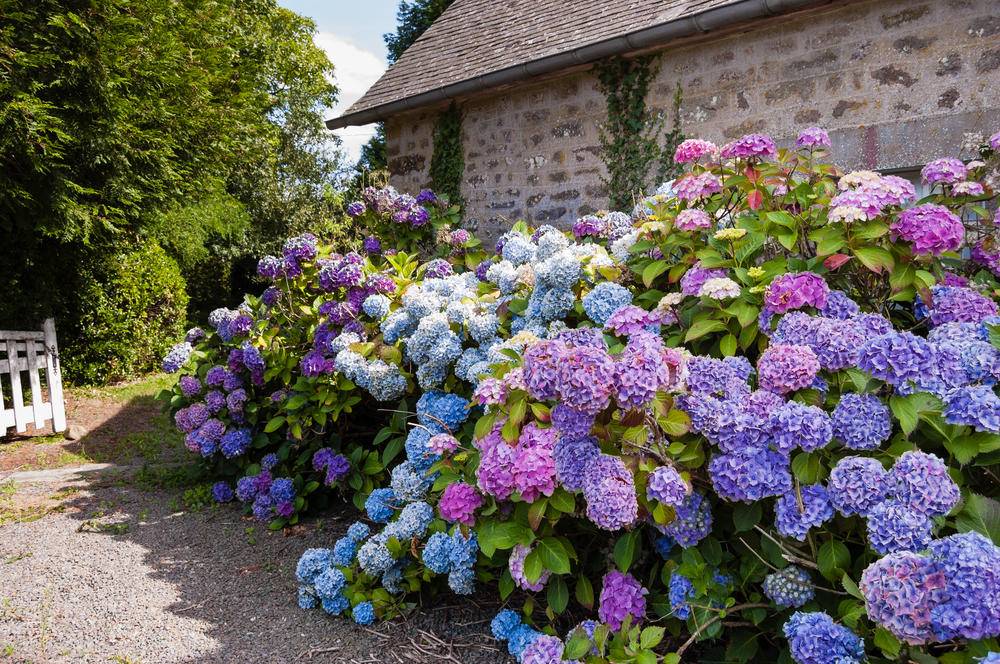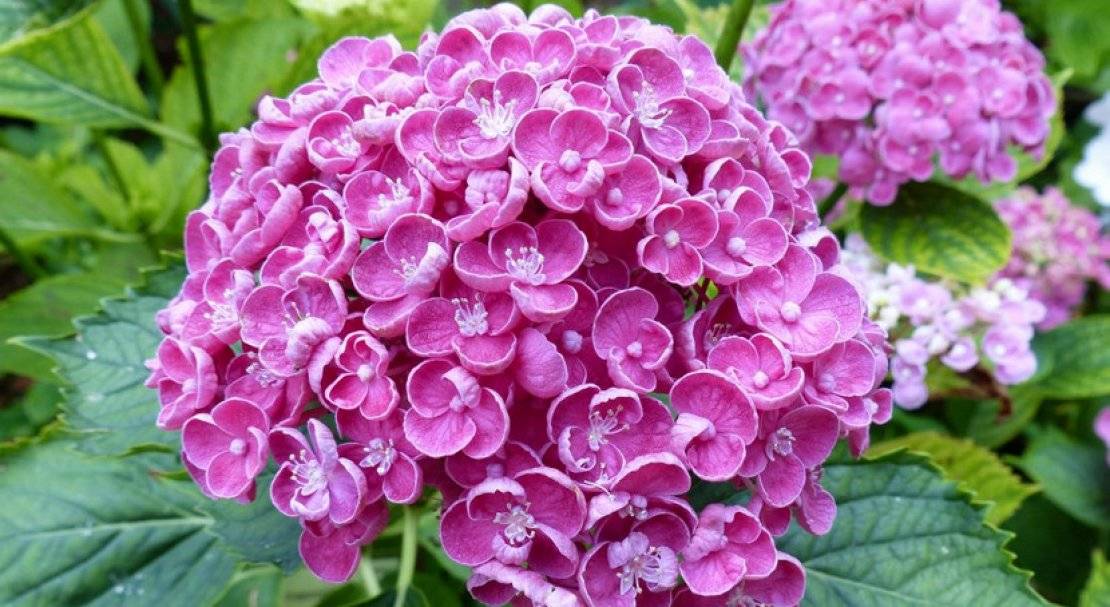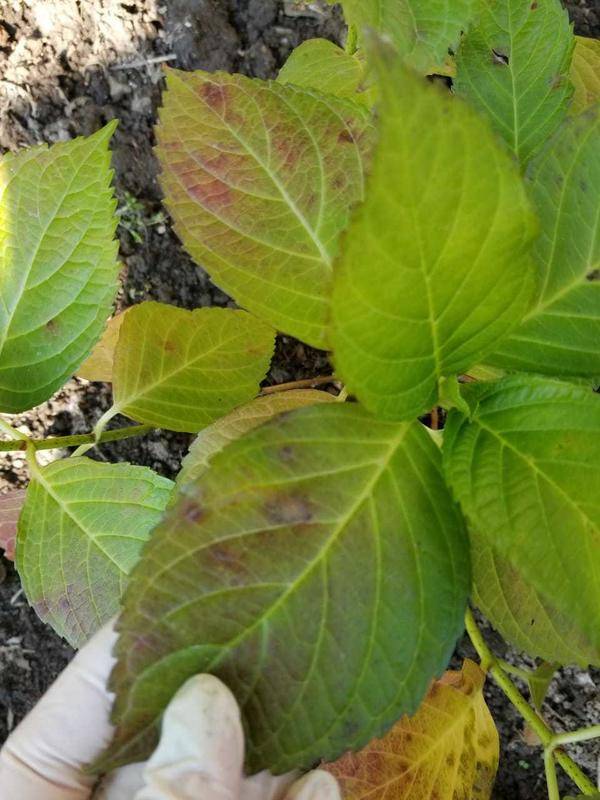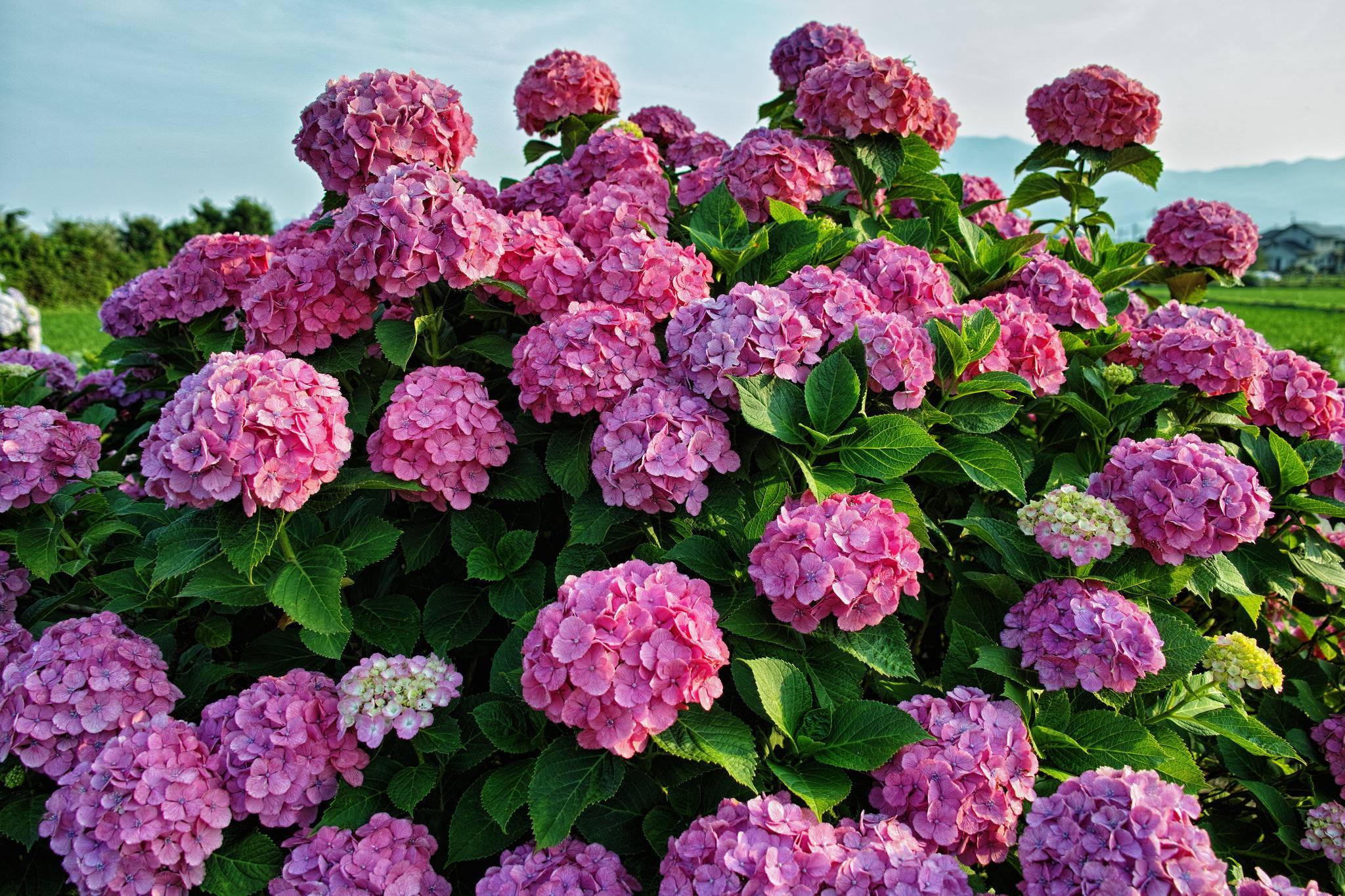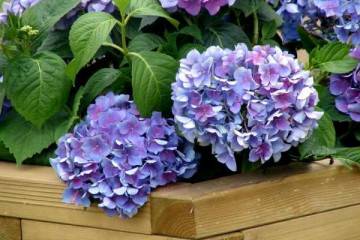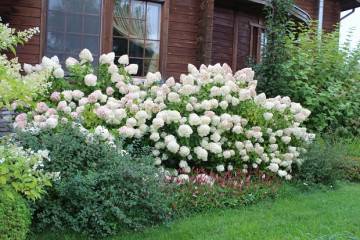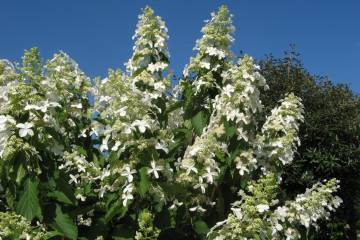Hydrangea grows poorly - what to do to accelerate growth
Content:
Hydrangea (Latin Hydrángea) is a flower that adorns the garden area during the summer months. However, getting the buds out of it is not so easy. To do this, it is necessary to carefully study the rules for caring for the plant and the factors affecting the formation of inflorescences.
How quickly paniculate, tree-like and large-leaved hydrangeas grow after planting
A properly selected planting site with the necessary lighting, fertile soil with the correct acidity, a favorable temperature regime - all these factors affect the growth rate of young seedlings.
If all conditions are met, the plant takes root well and grows very quickly. In a year, a flower can grow up to 25 cm, and it will take about 10-11 years for a hydrangea to grow to 1.5 or 2 meters. The growth rate is also influenced by the type of plant. Panicle hydrangeas are considered the most unpretentious and fastest growing. In moist and fertile soil, this species takes root very quickly and begins to grow. By the age of 4, it already grows to 1 or 1.5 meters. The first inflorescences appear at the age of 5 years.
Treelike hydrangea requires special care. It grows 30 cm per year.
Large-leaved hydrangeas are hard on Russian frosty winters. For this variety, a successful wintering is one of the main factors affecting the growth and flowering of a plant. However, very often last year's growths freeze slightly and the hydrangea remains without flower buds. Therefore, gardeners reliably cover the plant in the fall.
Why does garden hydrangea grow poorly?
Why does hydrangea grow slowly if all the conditions have been met? Usually the problem in such cases lies in improper care and unfavorable climate conditions.
Unsuccessful wintering
Each variety needs insulation in order to survive the winter frosts. It is necessary to spud the base of the trunk up to 25-30 cm in height, covering it with sawdust or earth. Tie the shoots neatly into bunches and wrap with burlap, lutrasil, and overlap with spruce branches.
In the northern regions, where winters are the most severe, in addition to hilling, you should also make a shelter for the shrub, for example, a wooden box and fill it with sawdust or foam crumbs.
If aHydrángea covered incorrectly, it most often gets wet and freezes. This happens in the case of polyethylene insulation.
Incorrect cropping
Hydrangea grows poorly, what should gardeners do in this case? First of all, the problem may be in the wrong pruning of the plant. In order for the shrub to give new shoots and be more lush, it is recommended to trim it annually. There are a number of rules to keep in mind when cutting:
- branches that are more than 6 years old should be cut;
- shoots with flowers in autumn should be shortened by 20 cm;
- remove infected and weak shoots, thin out the crown.
Depleted soil
Hydrangea grows slowly due to lack of minerals in the soil. Fertilizers, which are applied during the planting of the seedling, feed the plant for 1 year. After that, the shrub needs regular feeding. If the leaves of the plant become pale, the seedlings do not increase in growth, which means that the flower needs additional feeding. For this, special mineral fertilizers are used for this type of plant.
In the spring, the land around the plant is mulched with peat, humus or vermicompost. During the flowering period, the bush is fed with mineral complex fertilizers.
Diseases and pests
Why does the hydrangea not grow, although all the conditions are met? In this case, you should carefully examine the plant, it may have been attacked by pests or infected.Hydrángea resistant to disease, but can suffer from rot, downy mildew, fusarium and viral infections.
If the seedlings stopped growing, a gray or white bloom appeared on the leafy part and stems of the plant, the leaves became covered with yellow, brown and brown spots, and the roots of the dug hydrangea in the cut are brown, then such a plant is definitely infected. You can treat the flower with special preparations.
Why doesn't hydrangea grow in the garden? The reason here may be the invasion of such pests as aphids, spider mites, leaf beetles. Insects spoil the leaves, shoots, suck all the juice out of them.
Alkaline soil
One of the reasons why hydrangea does not grow is the acidity of the soil. ForHydrángea it should be between 4.5 and 6.5 pH. Check the acidity of the soil at the landing site using test strips. You can increase the acidity of the soil with the help of sour peat, coniferous sawdust, potassium nitrate. It is recommended to water the shrub with water to which citric or oxalic acid has been added.
Watering errors
Hydrangea needs regular and moderate watering. The soil should not be completely dry. Due to a lack of moisture, the shrub can stop growth. In summer, it is recommended to water the plant twice a week, but it should not be poured. During planting, a drainage layer is laid in the hole so that the water does not stagnate.
Damage to the root system during planting or during loosening
Careless planting of hydrangeas will damage the root. Because of this, the nutrition of the plant is disrupted, it stops growing, it may even die. Therefore, planting should be done carefully, gently straightening the roots, without jerking them. Loosen the soil to a depth of no more than 5 cm.
Little sun
Almost all hydrangea varieties do not like direct sunlight. The leaves turn yellow under this light, and the inflorescences fade. However, even in very dark places, the plant feels uncomfortable. It slows down its growth. The best place would be an area with lace shade, exposed to the sun in the afternoon. Planting a hydrangea in such a place would be the best solution.
Why hydrangea does not take root in the garden
A plant planted according to all the rules in soil with suitable acidity can also grow poorly.
Wrong choice of seedling (poorly tolerates cold, infected with something, poorly developed root system, etc.)
One of the private mistakes of gardeners is the choice of a hydrangea variety for which climatic conditions are not suitable. Paniculate and treelike shrubs grow well in many regions.Large-leaved hydrangeas, which amaze with their numerous inflorescences, grow well only in the south. In the middle lane, it is grown only as an indoor flower.
Also, you should not purchase seedlings on the market. It is best to do this in a specialized store.
Incorrect landing site
Hydrangea loves lacy shade, a place protected from drafts. Groundwater is not a hindrance for her, but a long stagnation of melt water can destroy the plant. In a well-chosen place, the hydrangea will bloom for a long time and profusely.
What to do if hydrangea grows slowly or not at all
A number of steps should be taken:
- Inspect the plant for disease or pest damage.
- Determine the acidity of the soil at the planting site.
- Carry out top dressing.
- If necessary, transplant the hydrangea to a new location.
Top dressing and fertilizers that accelerate the growth of hydrangeas (briefly)
When growing a shrub at home or in garden conditions, fertilizers such as vermicompost infusion, urea, ammonium sulfate, complex preparations, potassium sulfate and iron vitriol are used. It is better to feed the plant in courses.
The growth and flowering of a plant directly depend on strict adherence to the recommendations for choosing a place and the acid composition of the soil. With proper care, the shrub will quickly grow, it will delight the gardener with numerous inflorescences.
The ornamental plant fell in love with gardeners for its long and abundant flowering. Hydrangea takes root well in the temperate and temperate continental climate of Russia. Growing it requires a lot of work, but the result is worth it.
